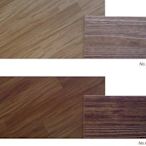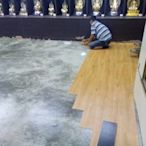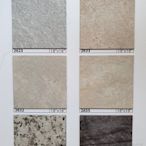搜尋結果
 $1200FLOOR TEC 品牌勁耐磨系列~長條耐磨木紋塑膠地板每坪$1200元起~時尚塑膠地板賴桑聖辰地板設計(原時尚塑膠地板)
$1200FLOOR TEC 品牌勁耐磨系列~長條耐磨木紋塑膠地板每坪$1200元起~時尚塑膠地板賴桑聖辰地板設計(原時尚塑膠地板) $600台中塑膠地板-優質.耐用.商品特價.木紋塑膠地磚2.0mm 每坪600元起《台中市免運費上美窗簾壁紙地毯
$600台中塑膠地板-優質.耐用.商品特價.木紋塑膠地磚2.0mm 每坪600元起《台中市免運費上美窗簾壁紙地毯 $600美的磚家~真實自然!FLOOR WORKS~枕木紋塑膠地磚塑膠地板~15cmx90cmx2.0m/m,600元/坪[美的磚家]塑膠地磚的專家
$600美的磚家~真實自然!FLOOR WORKS~枕木紋塑膠地磚塑膠地板~15cmx90cmx2.0m/m,600元/坪[美的磚家]塑膠地磚的專家 $650台中塑膠地板- 枕木系列~長條木紋塑膠地磚 《台中市免運費》上美窗簾壁紙地毯
$650台中塑膠地板- 枕木系列~長條木紋塑膠地磚 《台中市免運費》上美窗簾壁紙地毯![美的磚家~各式塑膠地磚DIY塑膠地板~美觀耐用~超便宜~45cm*45cm*1.5m/m每坪只要430元 美的磚家~各式塑膠地磚DIY塑膠地板~美觀耐用~超便宜~45cm*45cm*1.5m/m每坪只要430元]() $430美的磚家~各式塑膠地磚DIY塑膠地板~美觀耐用~超便宜~45cm*45cm*1.5m/m每坪只要430元[美的磚家]塑膠地磚的專家
$430美的磚家~各式塑膠地磚DIY塑膠地板~美觀耐用~超便宜~45cm*45cm*1.5m/m每坪只要430元[美的磚家]塑膠地磚的專家![長條木紋塑膠地板 塑膠地磚 -新發售《台中市免運費》 長條木紋塑膠地板 塑膠地磚 -新發售《台中市免運費》]() $650長條木紋塑膠地板 塑膠地磚 -新發售《台中市免運費》上美窗簾壁紙地毯
$650長條木紋塑膠地板 塑膠地磚 -新發售《台中市免運費》上美窗簾壁紙地毯![ABC風華再現系列~長條木紋塑膠地板每坪1700元起~時尚塑膠地板賴桑 ABC風華再現系列~長條木紋塑膠地板每坪1700元起~時尚塑膠地板賴桑]() $1700ABC風華再現系列~長條木紋塑膠地板每坪1700元起~時尚塑膠地板賴桑聖辰地板設計(原時尚塑膠地板)
$1700ABC風華再現系列~長條木紋塑膠地板每坪1700元起~時尚塑膠地板賴桑聖辰地板設計(原時尚塑膠地板)![[ 超耐磨塑膠地板 ] 耐磨層10條~100條歡迎挑選,保證通過ISO9001認證 [ 超耐磨塑膠地板 ] 耐磨層10條~100條歡迎挑選,保證通過ISO9001認證]() $79[ 超耐磨塑膠地板 ] 耐磨層10條~100條歡迎挑選,保證通過ISO9001認證富居窗簾
$79[ 超耐磨塑膠地板 ] 耐磨層10條~100條歡迎挑選,保證通過ISO9001認證富居窗簾![優品26系列~方塊塑膠地板連工帶料每坪550元起(時尚塑膠地板賴桑) 優品26系列~方塊塑膠地板連工帶料每坪550元起(時尚塑膠地板賴桑)]() $550優品26系列~方塊塑膠地板連工帶料每坪550元起(時尚塑膠地板賴桑)聖辰地板設計(原時尚塑膠地板)
$550優品26系列~方塊塑膠地板連工帶料每坪550元起(時尚塑膠地板賴桑)聖辰地板設計(原時尚塑膠地板)![美的磚家~-超值!塑膠地磚DIY塑膠地板應有盡有~超便宜~45cm*45cm*1.2m/m每坪只要400元. 美的磚家~-超值!塑膠地磚DIY塑膠地板應有盡有~超便宜~45cm*45cm*1.2m/m每坪只要400元.]() $400美的磚家~-超值!塑膠地磚DIY塑膠地板應有盡有~超便宜~45cm*45cm*1.2m/m每坪只要400元.[美的磚家]塑膠地磚的專家
$400美的磚家~-超值!塑膠地磚DIY塑膠地板應有盡有~超便宜~45cm*45cm*1.2m/m每坪只要400元.[美的磚家]塑膠地磚的專家![FLOOR WORKS ~A計畫2系列~長條木紋塑膠地板連工帶料每坪950元起~時尚塑膠地板賴桑 FLOOR WORKS ~A計畫2系列~長條木紋塑膠地板連工帶料每坪950元起~時尚塑膠地板賴桑]() $950FLOOR WORKS ~A計畫2系列~長條木紋塑膠地板連工帶料每坪950元起~時尚塑膠地板賴桑聖辰地板設計(原時尚塑膠地板)
$950FLOOR WORKS ~A計畫2系列~長條木紋塑膠地板連工帶料每坪950元起~時尚塑膠地板賴桑聖辰地板設計(原時尚塑膠地板)![炫麗塑膠地板系列~連工帶料每坪500元起~時尚塑膠地板賴桑 炫麗塑膠地板系列~連工帶料每坪500元起~時尚塑膠地板賴桑]() $500炫麗塑膠地板系列~連工帶料每坪500元起~時尚塑膠地板賴桑聖辰地板設計(原時尚塑膠地板)
$500炫麗塑膠地板系列~連工帶料每坪500元起~時尚塑膠地板賴桑聖辰地板設計(原時尚塑膠地板)
Dielectric Breakdown Voltage. 40 MV/m. Polyvinyl chloride (alternatively: poly (vinyl chloride), [6] [7] colloquial: vinyl [8] or polyvinyl; abbreviated: PVC [8]) is the world's third-most widely produced synthetic polymer of plastic (after polyethylene and polypropylene ). About 40 million tons of PVC are produced each year.
- 1.3-1.45
- 0.14-0.28
- 1.1-1.35
- 0.14-0.17
Polyethylene terephthalate (or poly (ethylene terephthalate), PET, PETE, or the obsolete PETP or PET-P ), is the most common thermoplastic polymer resin of the polyester family and is used in fibres for clothing, containers for liquids and foods, and thermoforming for manufacturing, and in combination with glass fibre for engineering resins. [5]
Polypropylene (PP), also known as polypropene, is a thermoplastic polymer used in a wide variety of applications. It is produced via chain-growth polymerization from the monomer propylene. Polypropylene belongs to the group of polyolefins and is partially crystalline and non-polar. Its properties are similar to polyethylene, but it is slightly ...
History. The company was founded in 1954, by Wang Yung-ching and Wang Yung-tsai with a US$798,000 loan from United States aid agencies. The first PVC plant was constructed in Kaohsiung and production began in 1957. As of 2005, FPC is the largest producer of PVC resins in Taiwan.



![[ 超耐磨塑膠地板 ] 耐磨層10條~100條歡迎挑選,保證通過ISO9001認證 [ 超耐磨塑膠地板 ] 耐磨層10條~100條歡迎挑選,保證通過ISO9001認證](https://s.yimg.com/fz/api/res/1.2/siL9_6yT37yp0WbNCzGEdg--~C/YXBwaWQ9c3JjaGRkO2ZpPWZpbGw7aD0xNDY7cT04MDt3PTE0Ng--/https://ct.yimg.com/xd/api/res/1.2/tTNofduIISagTmayRprgDA--/YXBwaWQ9eXR3YXVjdGlvbnNlcnZpY2U7aD0yMzg7cT04NTtyb3RhdGU9YXV0bzt3PTQwMA--/https://s.yimg.com/ob/image/e7b90ae2-5cad-44e5-ad6e-9e3119d55caa.jpg)




